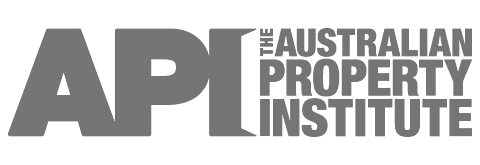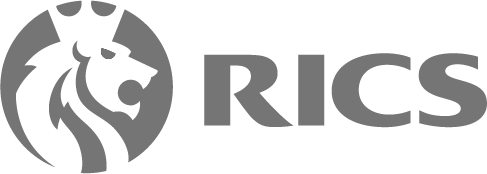
A valuation for plant and equipment is a key service for those involved in manufacturing, agriculture, or construction among others. It involves the preparation of an independent valuation report covering every necessary detail.
A plant and equipment valuation in Victoria is an assessment of the value of assets such as machinery and equipment that directly impact the organisation’s functionality. Owners, investors, and managers can all stand to benefit from these property, plant and equipment services.
The accuracy of these services is the main selling point, as nobody wants a report that inaccurately assesses their assets or equipment. With precise valuations, business stakeholders can get a definitive outline for major aspects of the company.
As such, organisations are careful to seek out valuation firms that have highly qualified and experienced valuers.
How accurate is real estate valuation?
At some point, you’ve probably wondered which real estate website has the most accurate estimates. But if you want a precise valuation service, you will need to reach out to a qualified and experienced professional valuer.
This means you will need to get an independent valuation service from a Certified Practising Valuer (CPV) of Plant and Machinery (P&M). These professionals have been carefully trained to prepare valuation reports of the highest accuracy.
Each report is created in accordance with all relevant regulatory and legislative standards. As such, the reports are legally-recognised and serve as official proof of value in a number of circumstances.
Professional valuers approach each task with rigorous due diligence and care; valuers follow fundamental principles of honesty, integrity, and transparency.
Qualified valuers are also registered with the Australian Property Institute (API). This is a governing board that oversees thousands of property professionals across the country to ensure a consistent standard of quality across the board.
Other forms of valuations such as online tools and appraisals are not nearly as effective as independent valuation services from registered professionals.
What plant and equipment valuation services exist?
A range of plant and equipment valuation services exist in Victoria. The three most commonly requested PP&E services are:
Asset valuation
As experts in the field, professional valuers are well-versed in determining the worth of all sorts of assets. These valuations involve a close analysis of the assets and include the following information:
- The name, description, and other identifying information of the asset
- The current condition of the asset, how it is performing and its changes over time
- The remaining useful lifespan of the asset
- An assessment of any impairment
- A calculation of the replacement cost
The information included will depend on the purpose of the report. Valuers prepare each report to be client-specific.
Machinery valuation
In today’s world, machines play a crucial role in the everyday functionality of almost all businesses. As highly valuable assets, you’ll want to make sure you’re always aware of how much your key machinery is worth.
Knowing the value of your machines allows for improved management. You can plan out when to sell or dispose of machines as well as identify any issues that need attention such as necessary repairs.
Plant and equipment valuation
A valuer can also perform a full and comprehensive property, plant and equipment valuation. The property as well as the assets such as machines and equipment. Businesses of all shapes and sizes can stand to benefit from these services.
A report that defines the value of your property, plant, and equipment can be useful in several situations. Whether you need pre-sale guidance or assistance with paying the right taxes, a plant and equipment valuation can assist.
What valuation methods are used?
For plant and equipment valuations, there are three commonly applied valuation methods. These are:
Direct sales comparison
A popular method amongst valuers. This approach involves an analysis of the sales of comparable assets to help determine the value. Often used for property valuations, it remains an effective calculation method for fixed assets such as equipment and machinery.
The comparable asset must be similar to the one being valued. As such, it must be around the same age, condition, use, and model, and serve a similar purpose. In cases where no direct comparable exists, a modern equivalent asset (MEA) can be used.
Income capitalisation rate
A method often preferred by investors; this approach focuses on the income generated by the asset. Valuers consider the continuous income an asset generates within a year without being sold. Firstly, the net operating income (NOI) is determined, which is the income produced less the operating expenses such as liabilities and taxes. The capitalisation rate is then determined, which is an estimate of the return on investment written as a percentage. The net operating income is divided by the capitalisation rate to find the value of the asset.
This approach is mainly used for commercial property but often serves as a secondary method when determining whether an asset is worth the investment.
The depreciated replacement cost method considers the depreciation of the asset when calculating its value. Valuers carefully examine the asset to calculate its replacement cost and therefore the existing value. The following is noted in the report:
- Identification: The information used to identify an asset such as the name, model number, and registration details.
- Description: Details surrounding the asset’s purpose, how it looks, and how it is used.
- Remaining useful lifespan: A determination of how much longer the asset will remain useful based on comparables, frequency of use, maintenance, condition, and depreciation.
- Depreciation method: The calculation method used to determine the depreciation. Two of the most popular methods are the straight-line approach and the units-of-production approach.
In conclusion
A plant and equipment valuation provides the highest standard of accuracy when it comes to determining the value of property, plant, and equipment. For owners and investors, this is a hugely beneficial service.
Only Certified Practising Valuers (CPV) of Plant and Machinery (P&M) can prepare these specialised reports. Valuers adhere to international valuation standards and every regulatory requirement. With vast experience and a unique insight into plant and equipment, valuers can prepare precise reports.
Asset valuations, machine valuations, and full-scale property, plant, and equipment valuations are three of the most popular of these services. A combination of trusted methods is applied. These include the direct comparison approach, the income capitalisation approach, and the depreciated replacement cost method.
For more information on how accurate plant and equipment valuations are, feel free to give us a call today to speak to one of our qualified experts.





